Are you in the market for a new pair of shoes but don’t want to spend a fortune on something brand new? Buying used shoes is a great way to save money and be more eco-friendly, but they often come with some dirt and grime. If you want to save money on a new pair of kicks, you need to know how to clean used shoes properly.
Today, I’m going to walk you through step by step how to clean used shoes
But don’t worry; with this guide, you’ll learn how to clean used shoes properly and make them look good as new. Let’s get started!
Key Takeaways for How to Clean Used Shoes:
- If possible, wash your shoes straight after you bring them home from the thrift store.
- Remove the insoles and do a thorough job cleaning and disinfecting them.
- Machine wash shoes if at all possible.
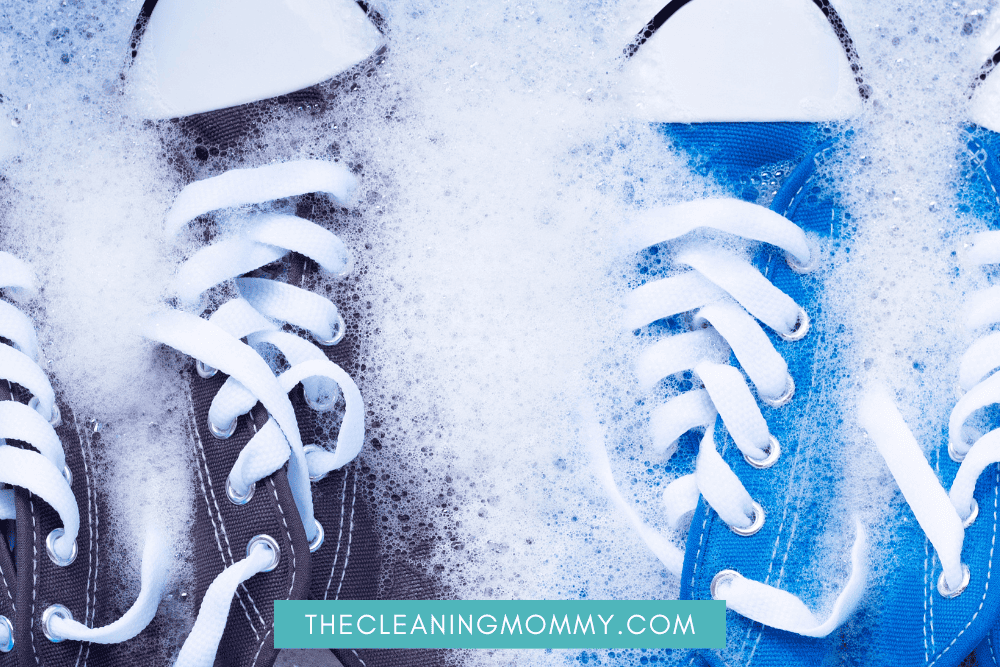
How To Clean Thrift Store Shoes
Vintage shoes from thrift stores can be found at a great deal, but they often come with dirt, grime, and wear from previous owners. While some may think it’s not worth the effort to clean them, with the right techniques and materials, you can restore your second hand shoes to their former glory.
Here are some tips for how to clean used shoes from thrift stores.
1. Washing the shoes
When washing used shoes that you purchased at a thrift store, the insoles need to be the main focus, as these harbor many germs. The best way to clean them is to remove them from the shoes and wash them separately in hot water with detergent. Then, rinse them thoroughly and let them air dry before putting them back in the shoes.
In addition to washing the insoles, it is also important to clean the rest of the shoe regularly. You can do this by wiping down the outside of the shoe with a damp cloth and spot-cleaning any areas that seem particularly dirty. By taking these simple steps, you can help keep your used shoes clean and free of germs.
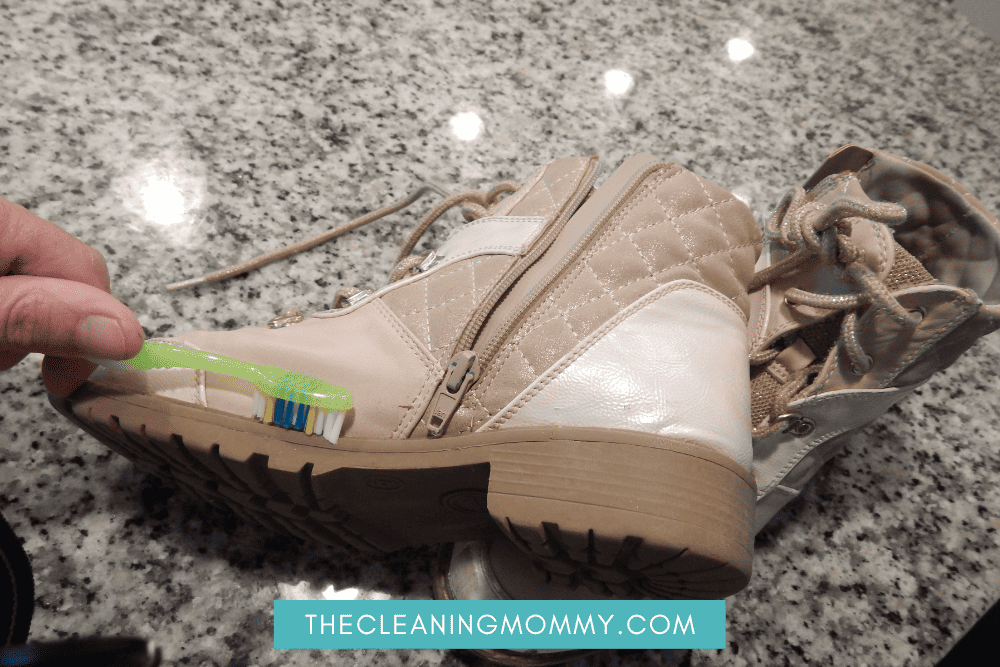
2. Clean and sanitize insoles
It is important to pay attention to the inner soles of your first when cleaning shoes. Among the supplies you’ll need are a bowl, hot water, dish soap or liquid detergent, and a soft-bristled brush or toothbrush.
After removing the insoles from the sinside of your shoes, soak them in a water and soap mixture for around five minutes. After rinsing, remove excess soap with cold running water. After that, gently scrub the stains off with your brush. Don’t forget to tackle the toe areas.
To dry your insoles, hang them in an area with good ventilation and no direct heat. Make sure your shoes are completely dry before putting them back on.
3. Make sure the shoes are machine washable
All dress shoes such as leather shoes, suede shoes, shoes with leather soles, and shoes with high heels are not suitable to machine-wash. Nor are any shoes that have a strong structure.
If you want to clean cotton, mesh, or sneakers, then you should machine wash them.
A washing machine can easily be used to clean canvas or fabric shoes, white sneakers, running shoes, or mesh shoes. Used suede shoes and used leather shoes should be washed by hand.
You should remove the shoelaces from your shoes and clean them before putting them in the washer. Wash them under a delicate cycle with warm water and laundry detergent.
When you have washed your shoes, you should allow them to air dry outside. Letting your shoes dry in a machine dryer is not recommended. Placing shoe blocks or a ball of newspaper in them will prevent creasing.
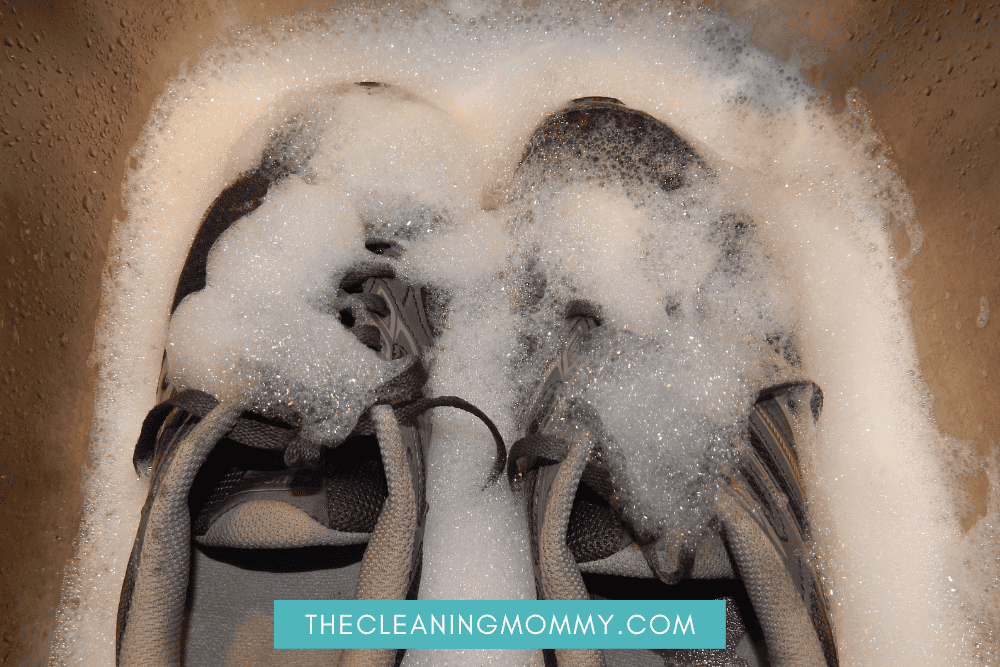
4) With More Delicate Materials, Go To Hand Washing
When determining which method is best to clean used shoes, it’s important to find out what material they are made of. The hand wash method is best for leather shoes, suede shoes, dress shoes, or any kind of delicate shoes.
For this you’ll need:
- Bowl or container
- Laundry detergent or shoe soap
- Soft brush or sponge
- Clean cloth
Instructions:
- Put a few drops of laundry detergent in your bowl of warm water.
- Combine the solution and the water
- Try using it on a tiny part of your shoe where no-one can see first to make sure it doesn’t ruin your shoes.
- Gently scrub your used shoes with a soft sponge or brush dipped in the liquid. Keep an eye on the seams, the top, and the bottom.
- Try using a toothbrush to get in between the seams and give the stitching and seams some direct contact if the stitching is faded or discolored. Press hard, but don’t overdo it!
- Wipe off remaining soap and water with a clean cloth (or at least a dry cloth or clean towel).
- Make sure your shoes are dried in a well-ventilated area without direct sunlight or heat. The drying process can take up to 48 hours.
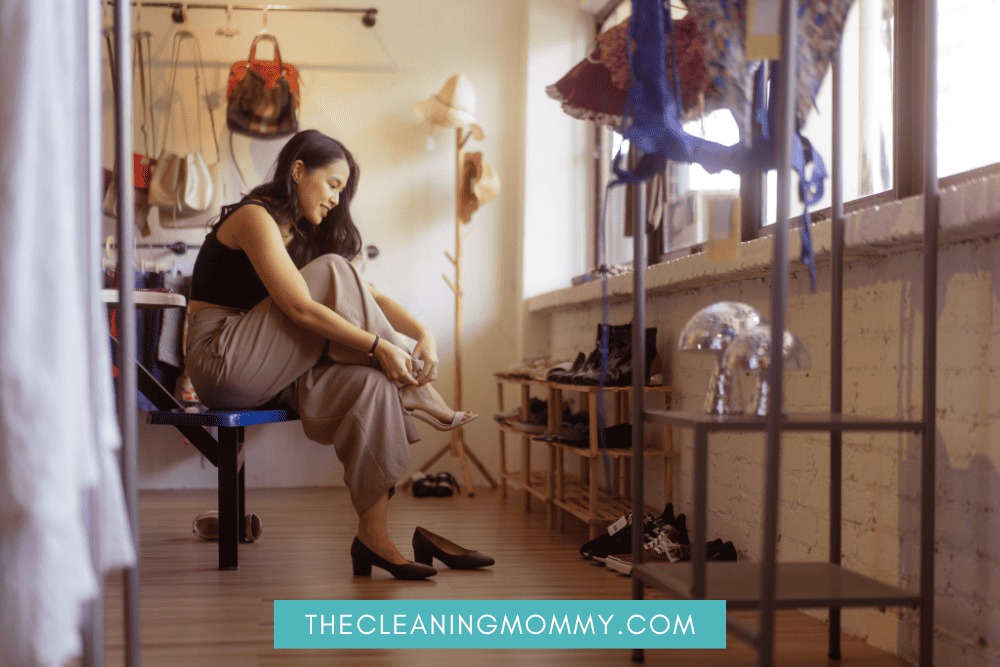
Using Chemicals To Disinfect Shoes
Using chemicals to disinfect used shoes from thrift stores is a common practice among thrifters and resellers. When purchasing second hand shoes, it is important to clean and disinfect them before wearing them to prevent the spread of bacteria and potential foot infections.
Use Rubbing Alcohol To Soak
The use of rubbing alcohol for cleaning shoes is recommended. Especially effective for delicate shoes, it is one of the strongest cleaning solutions on the market. Using rubbing alcohol, use a damp cloth. Then wipe the shoe’s inside and outside with the damp cloth. Insoles can also be soaked in alcohol.
The best method for cleaning sneakers is to soak them in rubbing alcohol for an hour and then let them dry. To remove difficult stains and disinfect shoes, you can also mix in some tea tree oil.
Disinfect Insides With Bleach
White sneakers and white fabric shoes can be cleaned with bleach. However, be careful not to overdo it and cause yellow discoloration.
To disinfect shoes (only white shoes), mix bleach with water in a spray bottle and spray it onto the inside of the shoe.
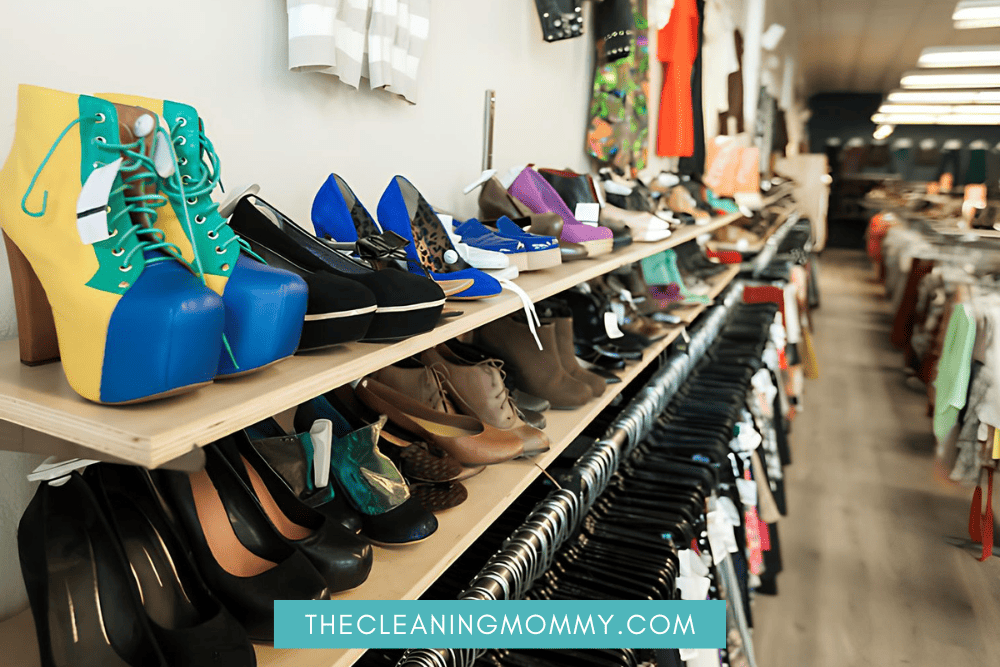
Antibacterial Sprays To Use On Shoes
One option for disinfecting used shoes is to spray them with an antibacterial spray. These kinds of disinfectant spray can kill bacteria and germs on the surface of the shoe, helping to prevent the spread of illness and odor.
It’s important to thoroughly clean the shoe before using an antibacterial spray, as it will not be effective on dirt and debris. Allow the spray to dry completely before wearing the shoes. It’s also a good idea to use an antibacterial spray periodically, especially if the shoes are regularly worn in environments where they may come into contact with bacteria or germs.
Cleaning removable insoles
When it comes to cleaning removable insoles, the best approach is to remove them from the shoe and clean them separately. Use warm water and mild detergent to spot clean any stains or buildup.
Allow the insoles to dry before putting them back in the shoes. It’s also a good idea to regularly replace insoles, as they can wear down and harbor bacteria over time.
Removable insole cleaning instructions
- Take out the insoles
- Apply five minutes of soaking in a warm water/soap mixture
- Under room-temperature water, rinse and remove excess soap
- Make sure all liquid is squeezed out
- Whenever there are persistent stains or grubby areas, use the brush.
- Dry well ventilated and away from direct heat
- Before putting them back in your shoes, make sure they are completely dry!
Those areas with slight imprints, such as the toes, tend to be the dirtiest. A new pair of insoles may be more comfortable if the old ones have a lot of wear marks.
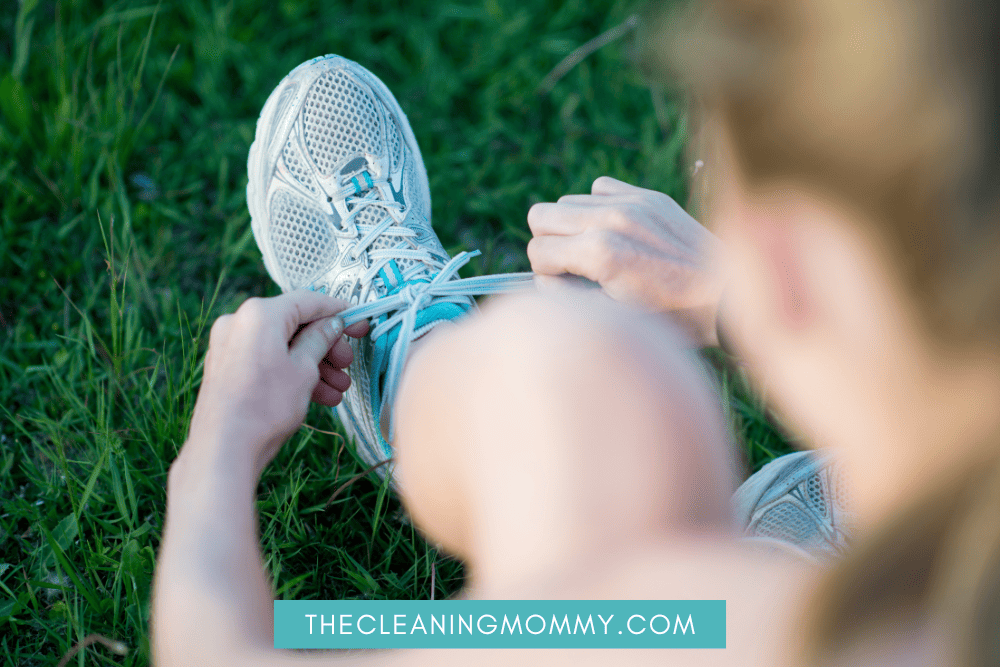
Hand Washing Delicate Shoes
When it comes to handwashing delicate material, it is important to first check the care label for any specific instructions. If there are no guidelines, a gentle handwashing with a mild detergent and cold water is usually safe.
It is best to avoid using a washing machine or dryer, as these can damage the material and cause shrinkage or discoloration. After washing, let the shoes air dry and avoid direct heat or sunlight. Spot cleaning with a damp cloth and dry shampoo can also be effective for removing dirt and stains on a more delicate pair of shoes.
Cleaning Suede Shoes
Shoe care for suede shoes requires minimal water, and washing them in a washing machine is not recommended. If there are small marks on the suede, wipe them away with a suede cleaning block.
In order to remove deep set stains, follow these steps:
- Add some soap to warm water
- Put a little bit of solution on the toothbrush and use circular motions to remove the stain
- Replace your soap water mixture with plain water.
- With just water, go over the stain again
- Dry away from any heat overnight.
Taking care of used suede shoes:
With used suede shoes, you may need to condition suede if it is exceptionally dry or old.
The conditioner should be applied inside and outside the shoe. You may need to use a brush with soft bristles to get it into the shoe.
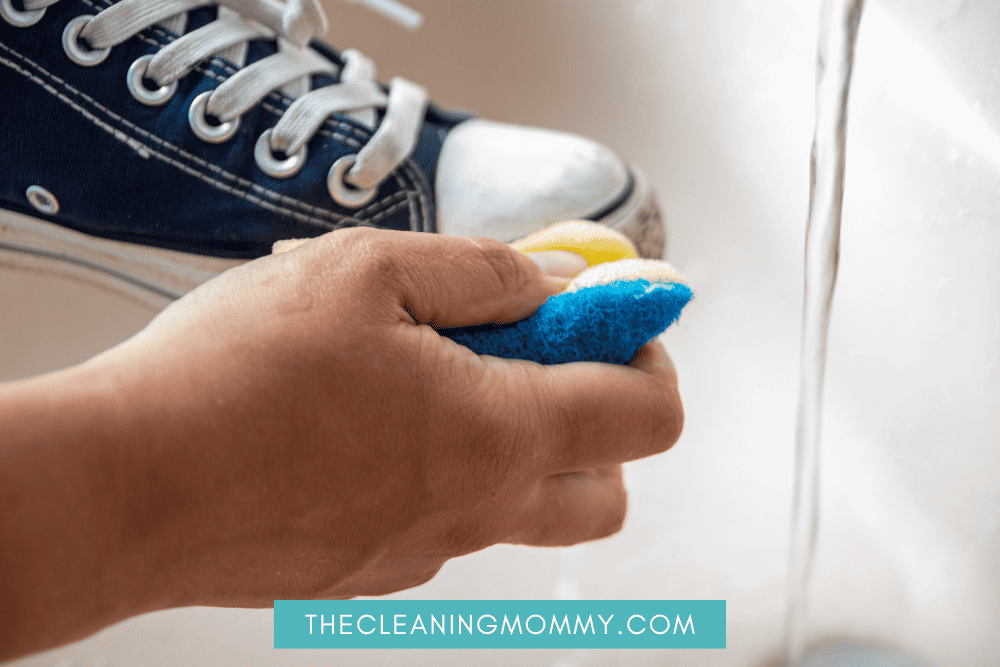
Cleaning Leather Shoes or Boots
- Laces should be removed and washed separately if necessary
- Remove the insole from your used leather shoes and examine them carefully.
- With a cleaning sponge or brush, use saddle soap or detergent
- Apply the saddle soap or soap mixture with your sponge or a clean cloth. You should be able to create a small lather with saddle soap
- A clean, dry cloth should be used to wipe off any excess lather.
- Allow the boots to dry slowly after removing any moisture with a clean towel. Heat can cause cracks to form on leather shoes, so avoid placing them near it. It can take up to 48 hours for leather shoes to dry naturally and slowly.
- After they are completely dry, you can apply boot oil, sealant, or leather conditioner. Depending on the situation, buff the surface of the clean shoes to remove marks.
How To Sanitize Or Disinfect Used Shoes
There are a few different ways to sanitize used shoes. One option is to use a disinfectant spray specifically designed for shoes, such as Lysol or Clorox. Simply spray the inside and outside of the shoe and allow it to dry before wearing.
Keep reading for other hacks for disinfecting used shoes and dress shoes that you’ve received from the thrift store, and tips to keep stains and stink away from new shoes and clean used shoes.
Wear Socks
The easiest way to prevent fungi infection on your feet is to wear a clean pair of socks. It is recommended that you do not wear damp socks. You should instead practice wearing socks that are moisture-wicking in order to keep your feet dry.
It is always a good idea to use synthetic fiber socks, bamboo socks, or hemp socks as they are all great options. As a result of dye chemicals used in certain socks, bad odors may be released and moisture may be retained. Wearing white socks will prevent this from occurring. Wearing moisture-wicking socks is the best way to keep your used shoes smelling fresh. In any case, stop going barefoot and wear socks (especially on a hot summer day…ew!)
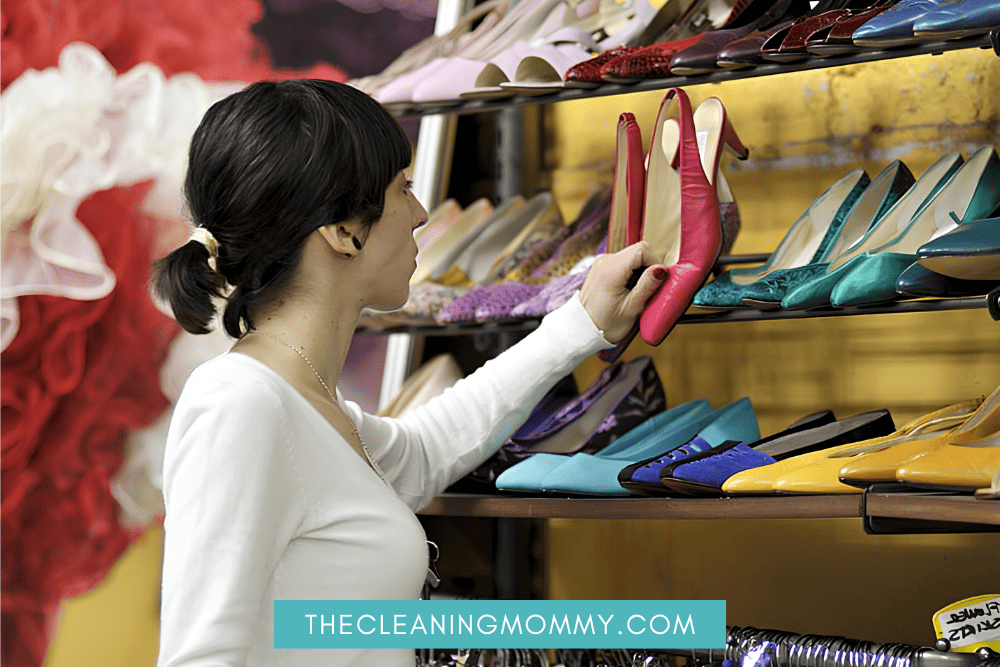
Apple Cider Vinegar
One way to disinfect your shoes is to soak them in a mixture of water and apple cider vinegar. The acidity of the vinegar helps kill bacteria and eliminate odors.
To make the solution, mix equal parts water and vinegar in a large bucket or tub. Fully submerge the shoes and let them soak for at least an hour before removing them and allowing them to dry. This method can also be used on other cloth or canvas footwear, such as sneakers or sandals.
Rubbing Alcohol
One method for sanitizing used shoes is to use rubbing alcohol. Simply pour some isopropyl alcohol onto a cloth and wipe down the surface of the shoe, paying extra attention to areas where there may be buildup or grime.
The isopropyl alcohol will not only disinfect the shoe but also help to remove any dirt or stains. It is important to let the shoe fully dry before wearing, as rubbing alcohol can sometimes leave a strong scent. This method works well for shoes made of non-porous materials, such as leather or synthetic materials.
For shoes with delicate material, fabric or mesh surfaces, it may be better to use a mild soap and water solution instead. As always, it is important to spot-test in an inconspicuous area before applying rubbing alcohol or any cleaning solution to the entire shoe.
Disinfectant Spray
One way to sanitize used shoes is to spray them with a disinfectant like Lysol. This will kill any bacteria or germs that may be lingering on the surface of the shoe.
It’s important to spray the inside of your shoes, as well as the outside of the shoe. Also, any straps or fabric parts. Allow the shoes to fully dry before wearing them again. Additionally, it’s a good idea to alternate between wearing different pairs of shoes to allow them time to air out and prevent the buildup of sweat and moisture.
These kinds of sprays are great for new shoes and used shoes.
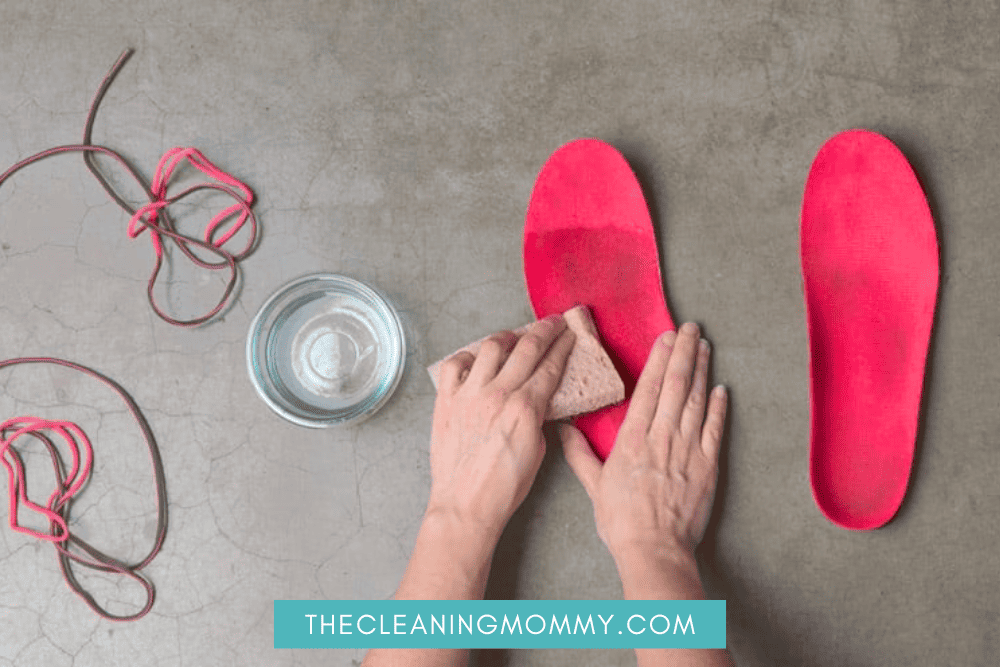
Baking Soda
One method for disinfecting used shoes is to sprinkle baking soda inside them and let sit overnight. Baking soda can absorb odors and kill bacteria.
After letting the shoes sit with the baking soda, shake out the excess and wipe down the interior with a damp cloth. This method can be repeated as needed for persistent odor issues. Baking soda can also be used on the exterior of the shoe as a gentle scrub to remove dirt and grime build-up.
Antibacterial Spray
One method of disinfecting used shoes is to spray the inside of your shoes with an antibacterial solution. This can help kill any bacteria or germs that may have accumulated on the shoe’s surface.
It is important to thoroughly clean the shoes before applying the spray, as dirt and debris can hinder the effectiveness of the antibacterial agent. Allow the sprayed shoe to dry completely before wearing them again.
It may also be helpful to spray the insides of the shoe sole as well, especially if they are made with porous materials like fabric or leather. Regularly disinfecting used shoes can help prevent the spread of illness and keep feet healthy and clean.
UV Light
One method for disinfecting used shoes is to use UV light. This technique involves placing the shoes in a chamber or box with UV lights and leaving them for a certain amount of time, usually around 10 minutes.
The UV rays kills bacteria and germs on the surface of the shoes. It is important to note that this method may not completely sanitize the shoes, as it only targets surface-level bacteria and does not penetrate deeper into materials such as fabric or leather.
Therefore, it is still necessary to clean the shoes with soap and water before using UV light disinfection.
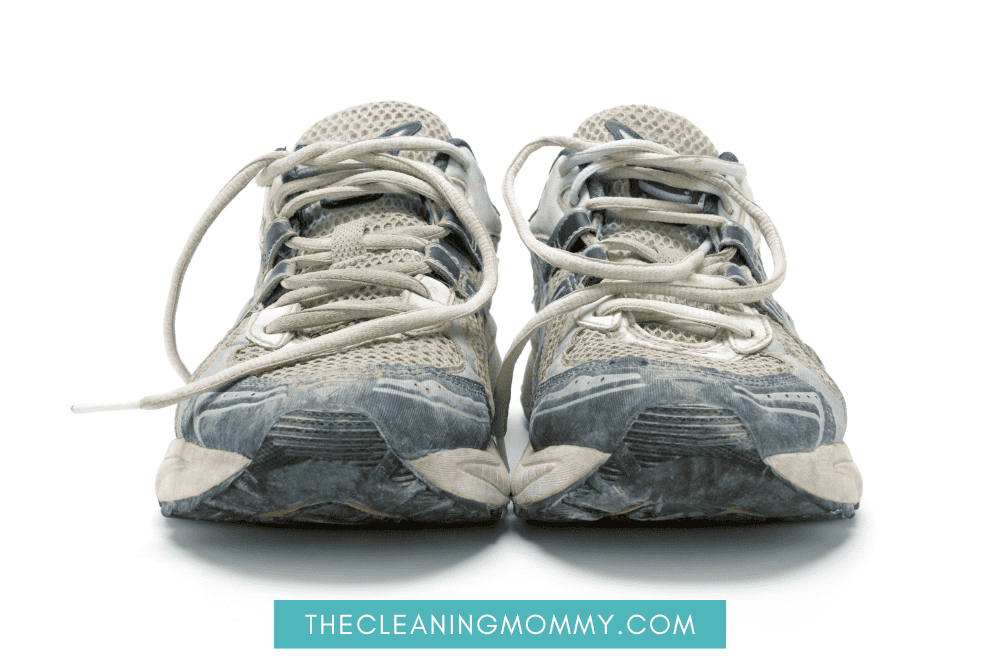
Dryer Sheets
One method to sanitize shoes is to place dryer sheets inside them before laundering. The dryer sheet will not only leave a fresh scent, but can also help kill germs and bacteria. This method is particularly effective for canvas or fabric shoes.
However, it is important to make sure the dryer sheet does not come into direct contact with any leather portions of the shoe, as it could potentially damage the material. Additionally, always check the care instructions for the specific shoe before using this technique.
Why You Need To Clean/Disinfect Used Shoes
Used shoes can harbor a variety of harmful bacteria and viruses, which can pose a serious health risk if not cleaned and disinfected properly.
Bacteria such as MRSA and E. coli can cause serious infection, while viruses like influenza and Norovirus can lead to serious illness. Wearing dirty shoes can also track these contaminants into your home, where they can spread to others.
For these reasons, it is essential to clean and disinfect used shoes on a regular basis. There are a number of ways to do this, but some simple steps include wiping down the second hand shoes with a cleaner designed to kill germs on contact surfaces, soaking them in a mild bleach solution, or using a UV shoe sanitizer.
By taking these precautions, you can help protect yourself and others from the spread of harmful bacteria and viruses.
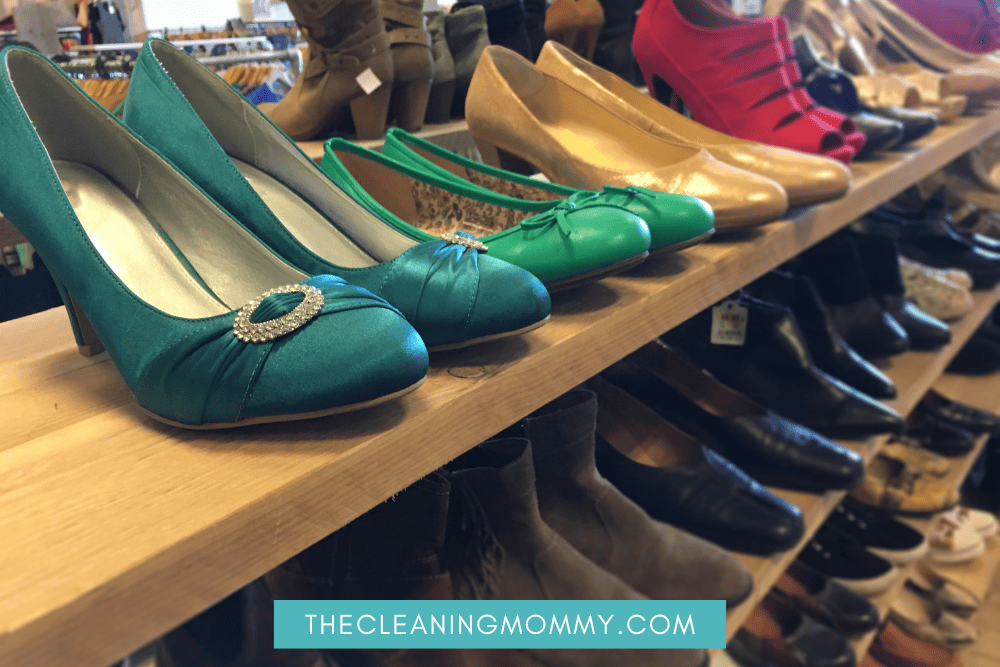
Do’s and Don’t for Disinfecting Used Shoes
One of the most important things to do when disinfecting used shoes is to make sure they are clean before applying any disinfectant. Use a brush or cloth to remove dirt and debris from the surface of the shoes.
Once they are clean, it is safe to spray with a disinfectant or wipe down with an antibacterial wipe. However, be careful not to saturate the shoes with too much liquid as it could potentially damage the material.
It is also important to avoid using harsh chemicals on delicate materials like suede or leather. Stick to gentle cleaning products specifically made for these materials.
Lastly, be sure to let the shoes fully dry before wearing them again to prevent any discomfort or potential bacterial growth.
Other Cleaning Articles You May Like:
- How to Clean Dress Shoes Without Polish
- How To Clean Loafers
- How to Hand-Wash and Machine-Wash TOMS
- How To Clean Work Boots
- How To Clean Memory Foam Shoes
- Cleaning the soles of your shoes
- How to remove sweat stains out of hats
- 3 Ways to clean a wicker basket
- Things to get rid of in your home

Grainne Foley
Grainne Foley is a wife and mother of 2 great kids. During her 5 years of full time RV travel, Grainne learned to become very efficient at household chores, in order to make time for family adventures. Now, back in a house, she has continued to create tools and techniques to help others lighten the load of household organization and cleaning.
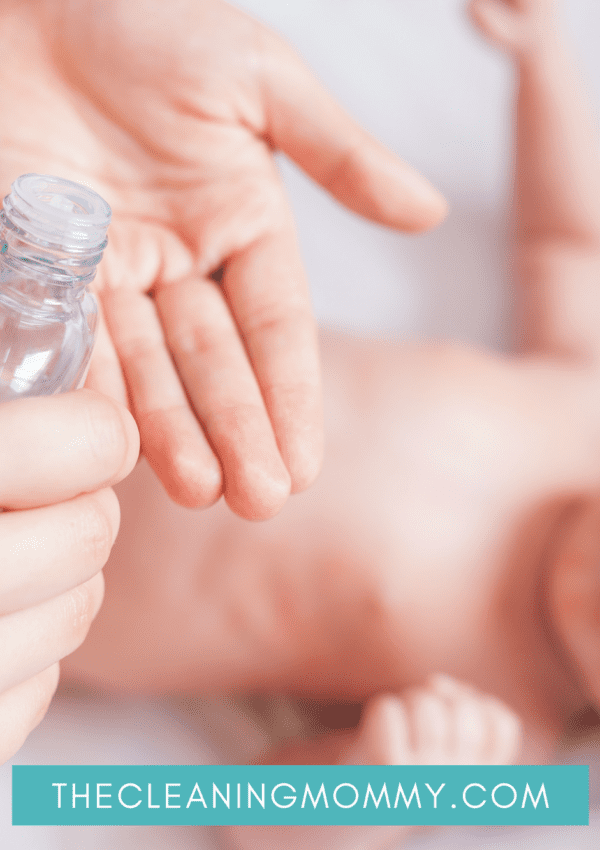
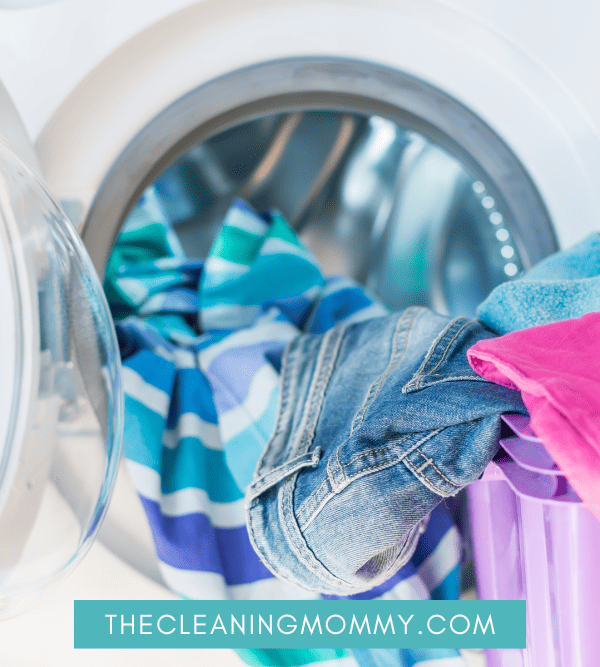
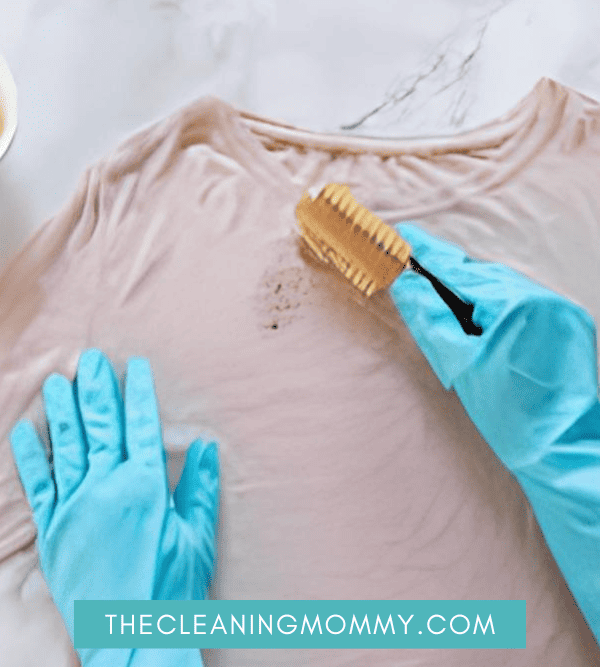
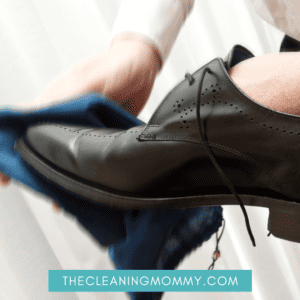
Leave a Reply